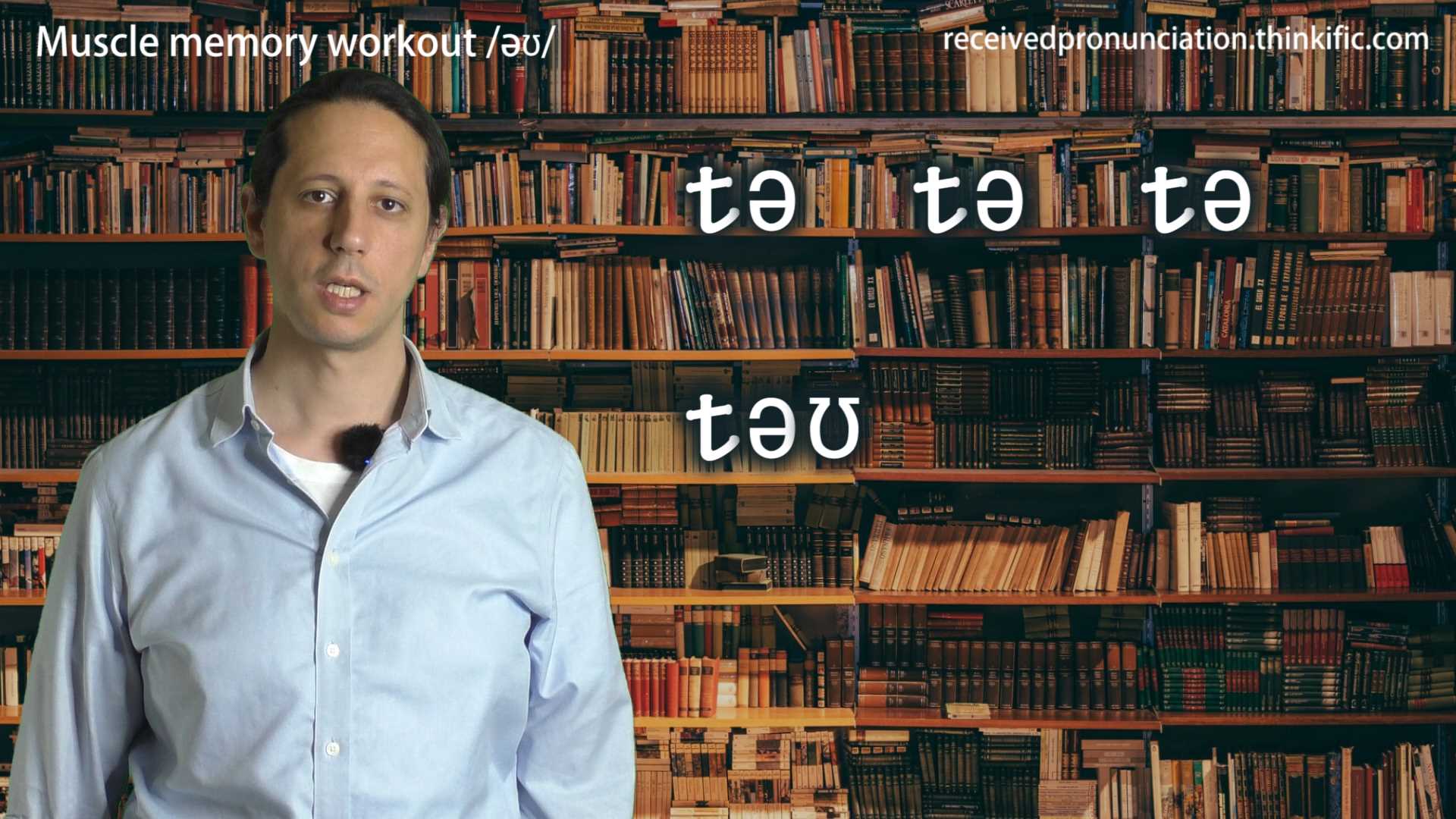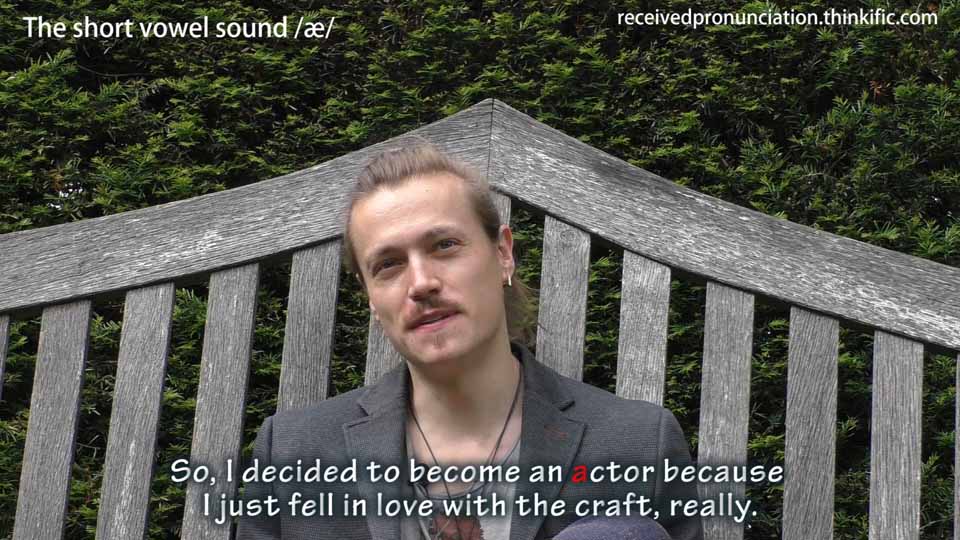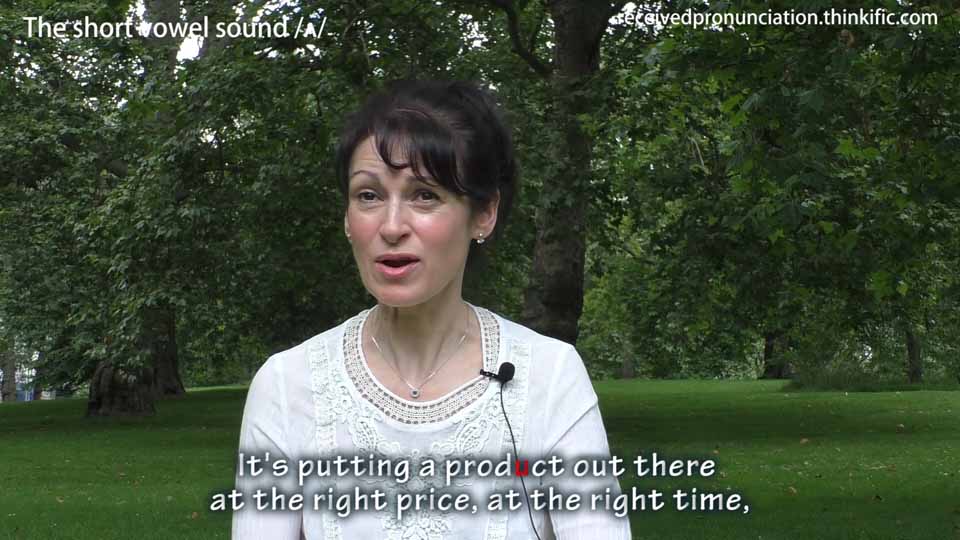Do you want to speak with an accent that sounds more native-like? Learn Received Pronunciation, the accent spoken by BBC newsreaders, presenters, journalists, and the top British actors in Hollywood.
This comprehensive course includes over 300 lessons, covering the fundamentals of British English pronunciation. Learn the 20 vowel sounds, the 24 consonant sounds, and the rules of connected speech with step-by-step video tutorials and PDF documents. Reinforce your knowledge with interactive exercises and drills.

Chapter I starts with a general overview of the basic tools we will use to study Received Pronunciation: the International Phonetic Alphabet and the vowel sound charts. Unlike English spelling, the International Phonetic Alphabet gives us an accurate representation of each individual sound. The monophthong chart helps us identify the position of the tongue for each vowel sound.

In Chapters II, III & IV, we explore each vowel sound in more detail.
Where is the phoneme located on the chart?
Where do we position the tip of the tongue?
Which facial muscles are we using? How does it compare to other vowel sounds?
We'll delve into the unique sounds of British English that are not found in other languages. We'll highlight the differences between sounds that may seem similar but are not quite the same. This focus on small but significant details will help us sound more native-like.
We'll also examine the critical role of consonant sounds in British English pronunciation. Though it may seem straightforward, many non-native speakers find it challenging to articulate consonant sounds with the same clarity and depth as a native speaker. We'll explore how the interaction between the mouth, lips, tongue, and lungs plays a crucial role in producing clear and distinct consonant sounds.

In order to sharpen your recognition of the target sounds, this course offers numerous listening exercises. The interconnection between the input (listening) and output (pronunciation) mechanisms means that honing your ear will also improve your ability to articulate the sounds with better precision.
Our approach builds up gradually, beginning with single-syllable words and gradually progressing to more intricate sentence structures. These exercises will help you become attuned to the subtle differences in sounds you may not have previously noticed.
Before engaging in more hands-on pronunciation practices, it's crucial to first be able to identify, isolate, and differentiate individual sounds. This is a key aspect of the course.

Each section features a vowel training exercise. The exercise pattern displayed in the screenshot above combines the target sound with the schwa sound. These drills will assist you in becoming more familiar with the natural rhythm of stressed and unstressed syllables, a crucial aspect of Received Pronunciation.

Included in the course is a series of muscle memory workout exercises to help you train the articulators to become more adept at recreating the natural sounds of British English pronunciation.
Developing muscle memory is crucial in improving your accent because it allows you to automate the correct pronunciation of sounds. When you repeat the same exercises over time, your muscles will learn to respond in the right way without requiring conscious effort. This allows you to focus more on the meaning of what you are saying and less on the mechanics of pronunciation. As a result, you will be able to speak more confidently and naturally.
In addition, by developing muscle memory, you will be able to produce the sounds of British English pronunciation more consistently, even when speaking at a faster pace or in more complex sentences. This will make your accent sound more natural and increase your overall comprehensibility to native English speakers.

You'll also have access to clear and concise PDF documents complete with explanations and diagrams. As your skills progress, you'll encounter increasingly complex exercises and drills.
For any questions, you can directly reach out to me through the discussion forum.
 |
 |
Experience unique video content featuring up-and-coming actors and business experts speaking with a natural British RP accent. Observe the sounds highlighted during their conversations.
This course has been created based on feedback I have received from my students who come from a wide range of linguistic backgrounds. I also recommend this course for those who wish to study on their own. The average completion time for this course ranges between 30-60 hours. Sign up today and master Received Pronunciation!
Get a free preview before making a purchase, and enjoy video tutorials with English, Japanese, and Russian subtitles (where available).
Start your journey to a perfect British accent by visiting https://receivedpronunciation.thinkific.com/courses/british-english-pronunciation-received-pronunciation or explore our other courses at https://receivedpronunciation.thinkific.com/collections.
